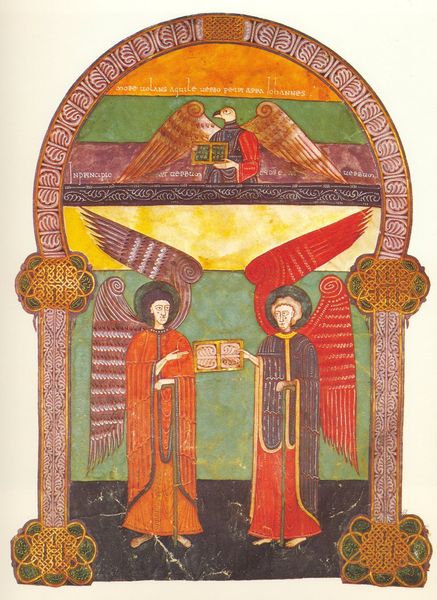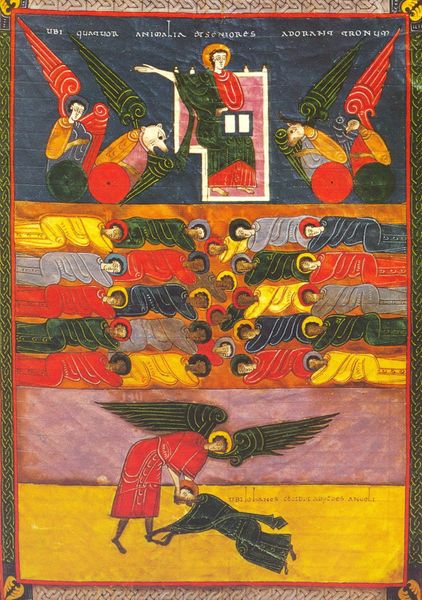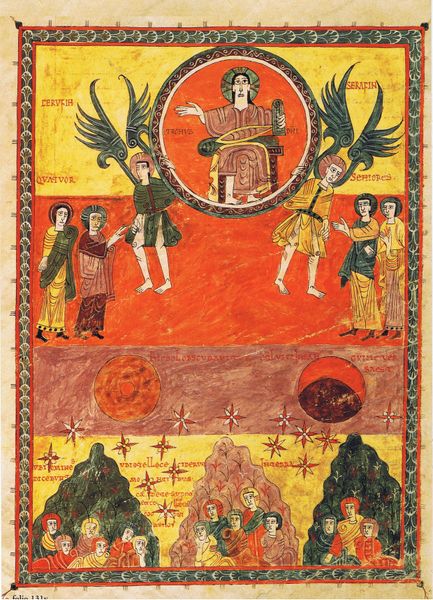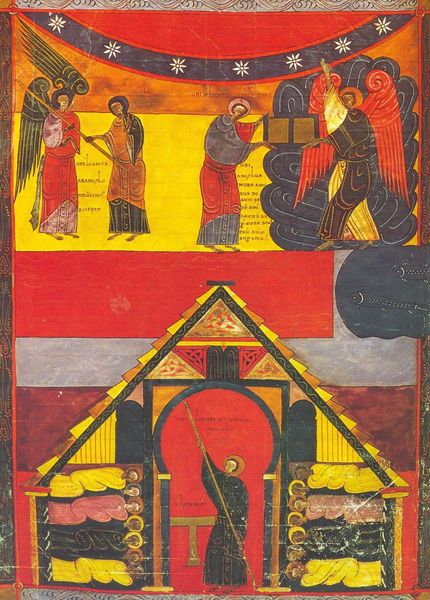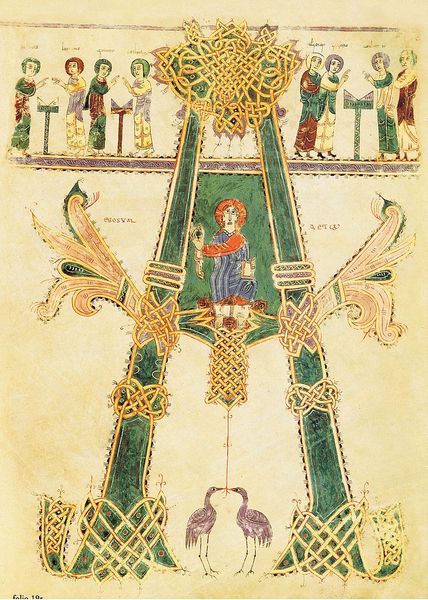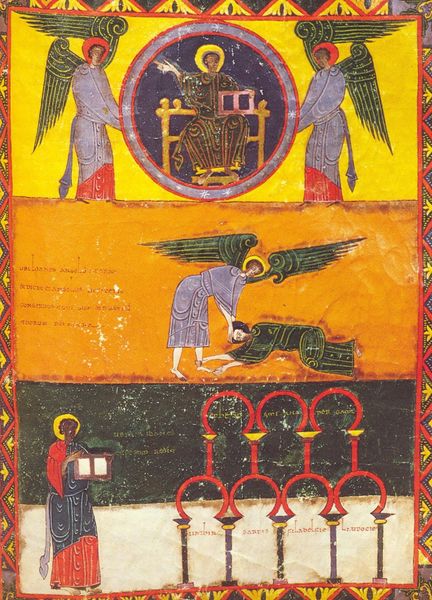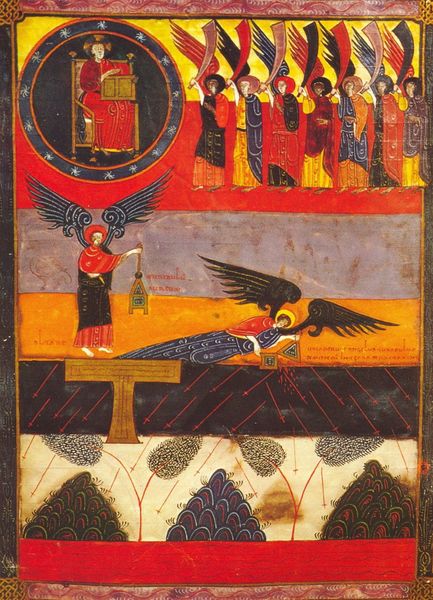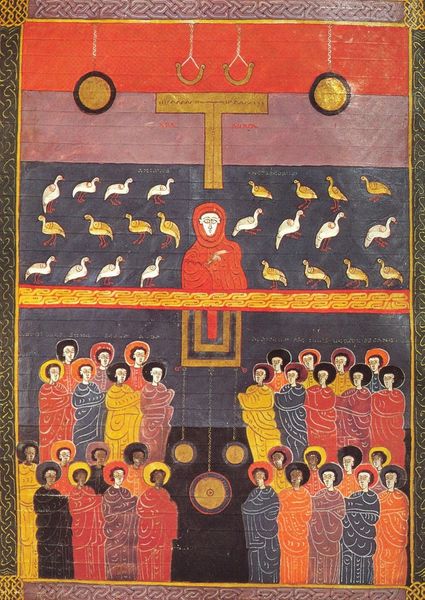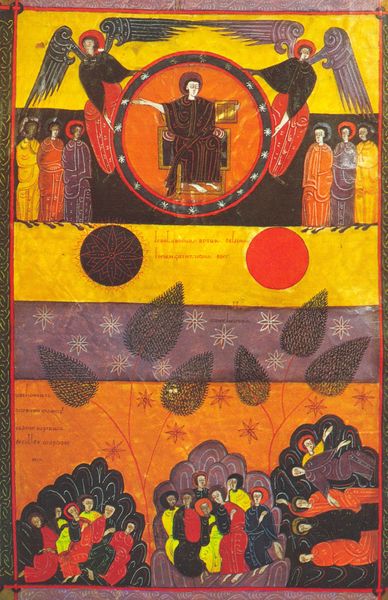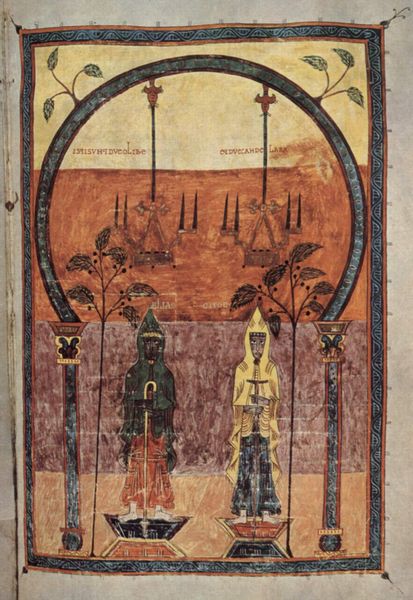
tempera, painting
#
byzantine-art
#
medieval
#
narrative-art
#
tempera
#
painting
#
figuration
#
naive art
Copyright: Public domain
This representation of Saint Mark the Evangelist was made around 1050 by the artist Facundus using ink and tempera on parchment. The parchment base itself tells a story. Animal skin, carefully prepared and stretched, transforms into a receptive surface. The artist then applied layers of pigment, each brushstroke deliberate and imbued with intention. Consider the symbolic weight of the materials. The ink, likely mixed from natural ingredients, carries the weight of centuries-old traditions. The tempera, made with egg yolk, lends a luminous quality to the colours, almost defying the constraints of the page. The making of this artwork would have involved a labour-intensive process, from preparing the parchment to mixing the pigments. This work reflects a deep understanding of materials and a commitment to skilled craftsmanship. It reminds us that the value of art lies not only in its aesthetic appeal but also in the time, effort, and knowledge embedded within its creation. By paying attention to the materials and processes, we can appreciate its cultural and social significance.
Comments
No comments
Be the first to comment and join the conversation on the ultimate creative platform.
